
Review on 🎶 Bluetooth 5.0 Power Amplifier with 100W Class D Hi-Fi Stereo Audio, 2 Channel Mini Amp, Wireless Receiver for Home Theater, Treble and Bass Control - Douk Audio G3 (Black) by Kelly Kaliyan

The company is really trying to make a name for itself. Good amplifier, output power is basically correct.
I like what this Chinese company "Douk" is trying to do, which is to make a decent and even good cheap class D amplifier and offer a real warranty program and customer service that they compete with other manufacturers of similar devices. Well done Duk! This is a good amp for its class, a very cheap Class D amp. I have two Klipch R-51M speakers (93dB sensitivity) and at half volume you can't get in a room about 20ft by 20ft with another speak person . BENEFITS ✅ Bluetooth works great. ✅ Enough power for sensitive speakers*✅ Small, compact power supply*Make sure your speakers have a sensitivity of 90dB or higher. (See Technical Discussion) NEGATIVE RATES❌ Class-D amplifiers increase THD after 50% power.❌ I was experiencing Bluetooth interference from my Wi-Fi router. I solved this problem by placing the Douk Audio amplifier 3 feet away from the router.❌ It is rated at 4 ohms, but most home audio systems are 8 ohms, which roughly halves the performance. Most speakers operate at different impedances regardless of their power rating, so don't worry. ❌ Bluetooth does not support aptX in any form. Edit: 04/30/2021 (already 1.5 years!) Still perfect. 14 hours a day about 30%. No problem. Keep it up Duk! Some people report a click when connecting or disconnecting. I like it because it gives me an audible confirmation that the device is connecting or disconnecting BT, like click-click I know it's connected and vice versa. Note that although THD is high at higher volumes, I've done some acoustic testing and it still sounds very clear to my ears. You can have a lot of THD and never hear it. A good example is a car radio. TECHNICAL DISCUSSION BELOW Before I continue, I would like to make the following note: In terms of volume, you will not hear any difference in volume or quality when using the included 19V power supply versus a 24V power supply. Douk did an excellent job performance, performance and cost! Read why below. First, speaker sensitivity is much more important than amplifier power because every 3dB of speaker sensitivity doubles the power of the amplifier, and doubling the amplifier power increases volume by about 23%. +3dB increases volume by 23%, increases power by 2x. +6dB increases volume by 52% and increases power by 4x. For example, if you use sensitive 87 baud speakers and you have a 50W amplifier, you need to increase the power of the amplifier by 4 times. with a sensitivity of 93 dB to adapt to the loudspeaker volume. That means a 93 dB speaker is 52% louder than an 87 dB speaker at any power level. So keep that in mind when using this amp with your own speakers. It's a lot cheaper to find more sensitive speakers than trying to double the power of the amp. Douk Amplifier Power Demystification: The amplifier uses a Texas Instruments 3116D amplifier chip. from 21V. Most speakers have an impedance of 8 ohms, which lowers the power rating. The total power of 100 W is calculated from a 21 V power supply with a resistance of 4 ohms. This means that with an 8 ohm speaker, the total continuous output is not really 100 watts. So we lose some power due to the voltage and also when calculating at 8 ohms. So what is the actual power output of this amp at 19v and 8 ohms? The following are the specs for the Texas Instruments 3116D from the Texas Instruments website: From the specs PDF: 2 × 50W into a 4 ohm BTL load at 21V (TPA3116D2) This is the spec that Dook used: 100 W total. The same datasheet has a graph showing continuous power output per channel. Graph in PDF datasheet: 2 x 21W into 8 ohm BTL load at 19V (TPA3116D2) 2 x 26W into 8 ohm BTL load at 21V (TPA3116D2) 2 x 34W into 8 ohm BTL load at 24 V (TPA3116D2) I'll just add both channels below to keep the measurements the same, which is the total continuous power (RMS) plus or minus a few watts: 19V into 8 ohms: total continuous power is 45W (power supplied with the amp ). 21 V at 8 ohms: The total continuous power is 55 W. (+23% power increase). 24V @ 8 ohms: 72W total continuous power (+61% power gain). With the 24V power supply you get 61% performance compared to the 19V power supply that comes with the amplifier! sounds shit, right? Remember: +3dB increases volume by 23% and consumes 2x more power (100% more power). That means you need a 100% power increase to increase the volume by 23%. When using 24V (compared to the included 19V power supply) you get about 14% more volume at most. It really isn't much. CONCLUSION Douk and others use the highest rating, but 4 ohm home speakers are almost non-existent. Most of them are 8 and some are 6. However, no speaker works at every impedance all the time. It's just a link. An 8 ohm speaker changes with frequency. So even with an 8 ohm speaker you still get 100 watts RMS total power with 21 volts in and out to change the frequency (the speaker will run into 4 ohms even if it's 8). ohms.) This means that a 19V supply will give you almost all the volume that a 21V or even 24V supply would give you. Conclusion: There is nothing wrong with this amp if you understand, what he is capable of. NULL's audio buying rules: (1) Speaker sensitivity is more important than amplifier power. (2) Buy the most sensitive speaker you can. I would never buy a speaker with less than 90dB sensitivity. (3) Remember from the above technical discussion that every 3dB of speaker gain increases volume by 23%. (4) To get the same 23% volume boost from the amplifier, you must DOUBLE the power of the amplifier. (5) April 2021 Added: All Bluetooth audio amplifiers must now support aptX HD.
- Amplifier
- I don't remember
New products
Comments (0)
Top products in 🍿 Home Theater
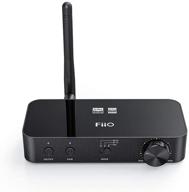
FiiO BTA30: Advanced Wireless Bluetooth 5.0 Long Range 🔊 Transmitter Receiver for PC/TV/Speaker/Headphone with HiFi Dac/DSP and Streamlined APP Control

15 Review
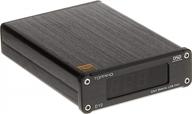
AIMPIRE AD10 Mini USB DAC CSS XMOS XU208 ES9018K2M OPA2134 HIFI Audio Decoder Amplifier For Enhanced Audio Performance

20 Review

Powerful Logitech Z623: 400W Home Speaker System - Black - Get Immersed!

46 Review
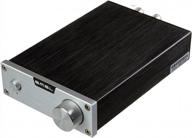
Silver 160W Stereo Digital Amplifier With Power Adapter - S.M.S.L SA-98E For Enhanced SEO

15 Review
Another interesting products
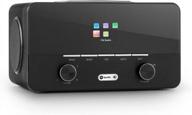
AUNA Connect 150 Black 2.1 Wi-Fi Internet Radio Music Player With MP3 USB Port, AUX & Remote Control - Black

16 Review

Radio receiver Max MR-322 anthracite

14 Review
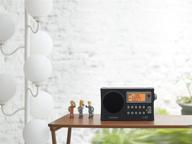
Sangean PR-D4W Portable Weather Alert Radio with AM/FM Bandwidth Narrowing and Auto Tracking for Improved Searchability

12 Review

Experience Dynamic Audio with Panasonic SC-UX100 CD & USB Wireless Bluetooth 300W Mini Hi-Fi System Shelf Stereo

19 Review

